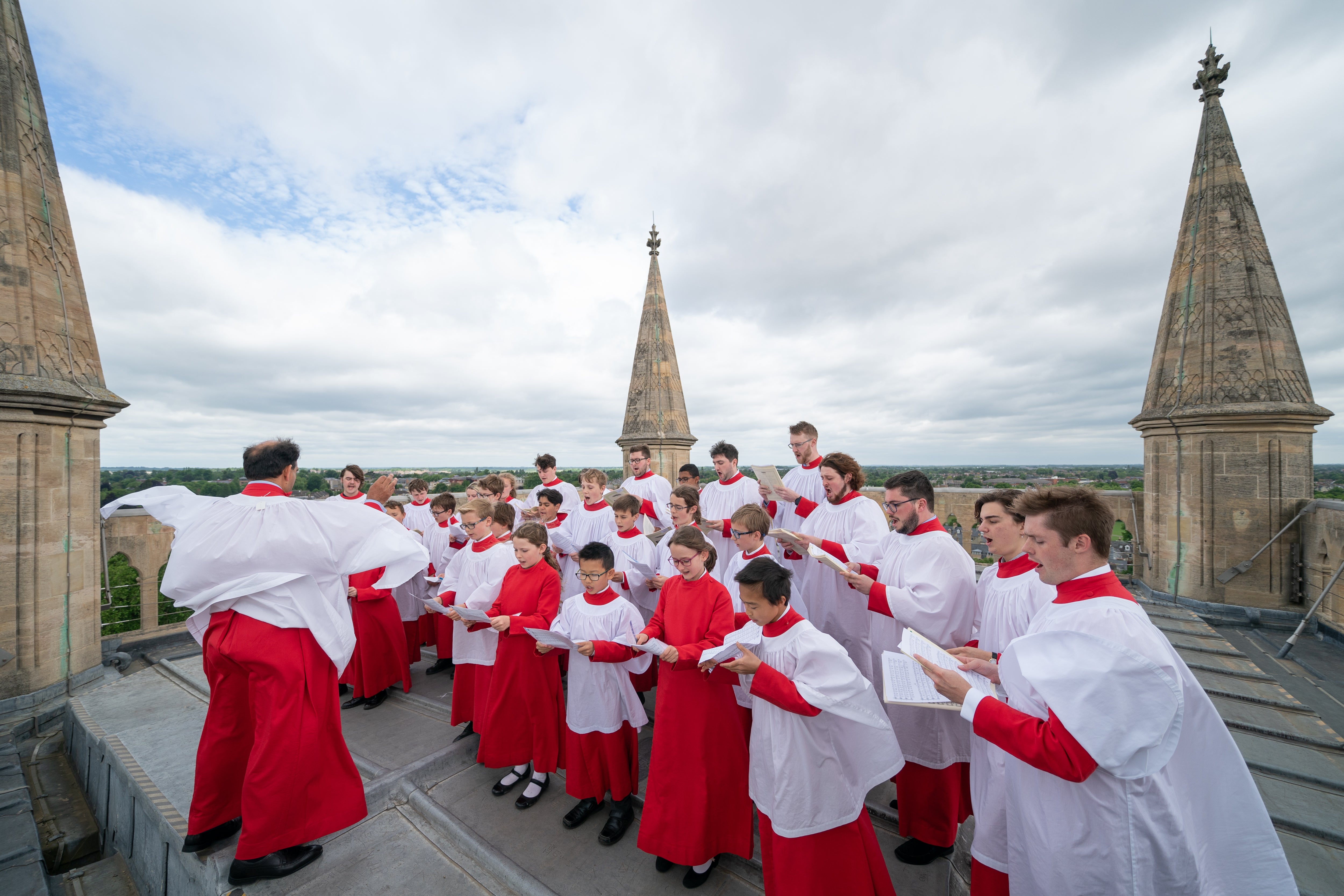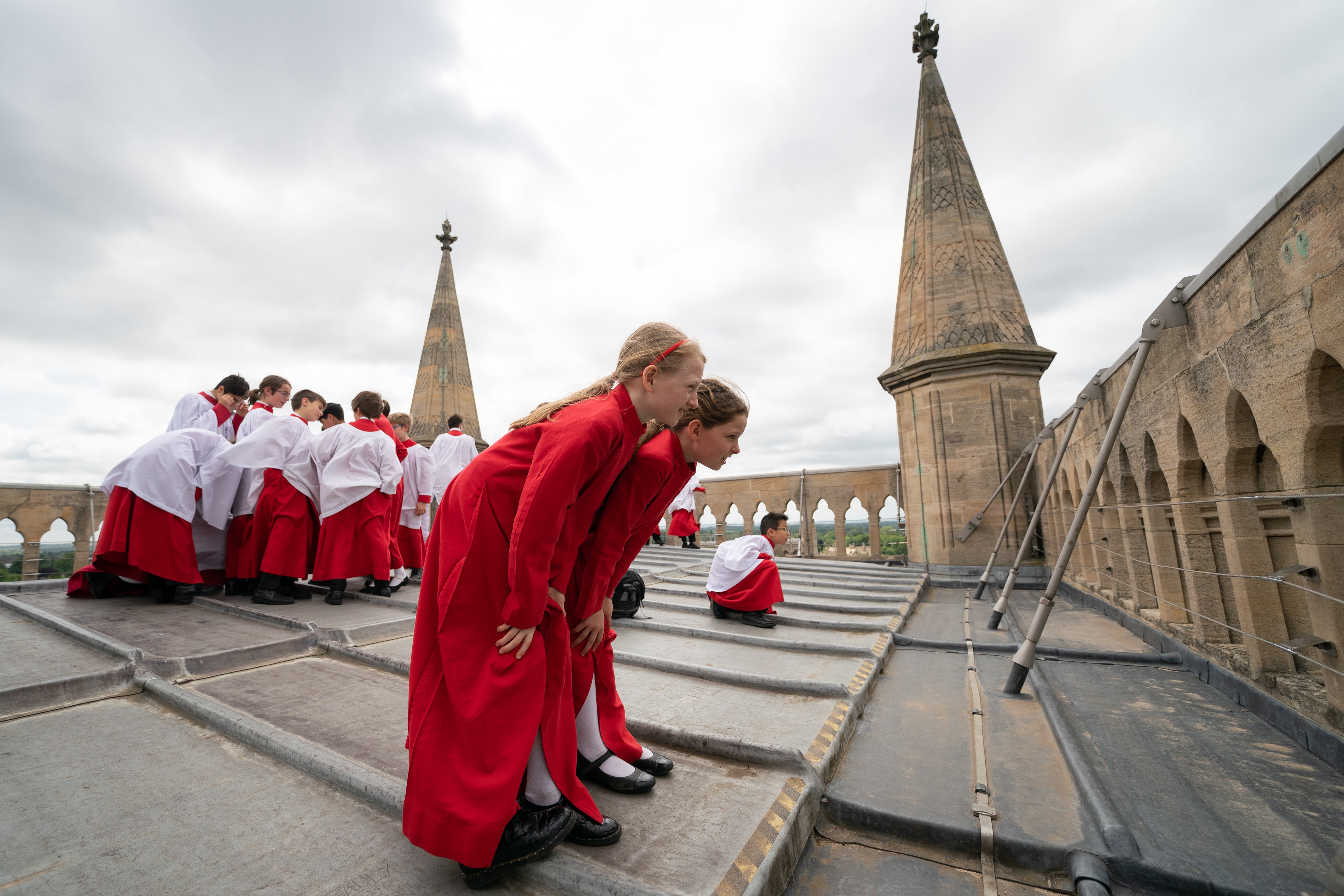
A choir sang from the rooftop of St John’s College Chapel tower in Cambridge to mark Ascension Day, continuing a tradition that dates back to 1902.
Ascension Day celebrates the Christian belief in the ascension of Jesus into heaven, 40 days after his resurrection at Easter.
Each year, members of the choir at St John’s climb the 163ft spiral staircase to the top of the tower to sing the Ascension Day carol.
The tradition began after a conversation between composer Cyril Rootham and a fellow at the college, Sir Joseph Larmor, who insisted a choir singing from the top of the tower would not be heard on the ground.
Mr Rootham proved Sir Joseph wrong after arranging for a choir to climb to the rooftop and sing without telling anyone.
Thursday’s rooftop performance was the first since the pandemic and saw girls sing with the choir on the roof for the first time.
One of the probationers, Amelia, 10, said: “It was amazing. It was really exciting getting to sing with the rest of the boys up at the top of the tower.”
The choir, which was founded in the 1670s, admitted girls for the first time last month.
Three joined rehearsals as probationers on April 26, a move described by director Andrew Nethsingha as a “big moment for the history of the choir”.
He said the girls will become choristers and sing in services when they are ready.
Mr Nethsingha said the choir is “currently the only Oxbridge choir to have both male and female singers amongst the children and also amongst the students”.
Choristers are between eight and 13 years old, with adult choral scholars aged 18 and older – most of them undergraduate students and some postgraduates.

“This decision is another step in the evolution of the choir, which is constantly developing,” Mr Nethsingha said.
“We were overwhelmed by the positive reaction when we announced the news last year and had support from our audiences, alumni and the wider industry, which was fantastic.
“There was a small amount of criticism but the positive reaction by far outweighed this.”
The total number of choristers in the choir varies between 20 and 25, Mr Nethsingha said, with three girls joining this term, increasing to five girls next term.
He said the number of girl choristers will “gradually increase” and “in about three years time I anticipate the boy/girl proportions being roughly equal”.
Mr Nethsingha said all choristers start as probationers and it will be a “little while” until the girls are singing in services.
There are around 16 adult choral scholars.
“In future, the alto part will be sung by both male and female choral scholars,” he added.

“Our first woman alto joins this term. There are usually four or five altos in the choir.
“Choral singing is a very specialised art form and our choir has played a formative role in the careers of many globally recognised musicians.
“We felt that extending the membership to talented female singers would create an exceptional new musical opportunity for women and girls.
“I am really proud of what we are doing and I think it is a very positive change to have introduced.
“I’m excited to offer the unique experience of being in the choir to girls, boys, men and women.”
Choristers rehearse before school five mornings a week.
Additionally, they sing six services in the chapel each week – five in the early evening and one on Sunday mornings.







